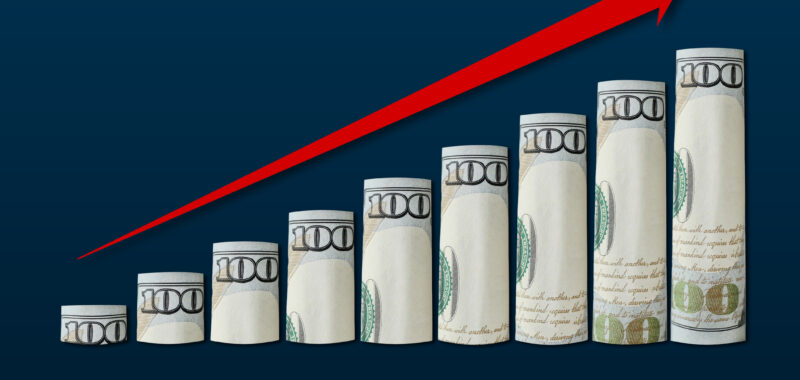Realty Income has been a very enriching investment over the years.
Realty Income (O -0.26%) knows how to make money for its investors. The real estate investment trust (REIT) has delivered a 14.3% compound annual total return since its listing on the New York Stock Exchange in 1994. That has enabled it to grow a $10,000 investment 30 years ago into more than $555,000.
The REIT should have no trouble growing the wealth of its investors in the future. Here’s why it should continue to be an enriching investment.
Growing wealth one dividend payment at a time
Dividend payments have significantly contributed to Realty Income’s success over the years. The REIT has paid over $14.1 billion in dividends since it came public. It has an incredible record of increasing its dividend. The REIT has raised its payout an incredible 127 times, including for 108 straight quarters, growing its payout at a 4.3% compound annual rate.
Those dividend payments have been a meaningful contributor to Realty Income’s returns. For example, it would have cost an investor $37,330 to buy 1,000 shares at the end of 2013. That investment would have generated nearly $30,000 in dividend income over the course of a decade, paying back about 80% of the original investment. The annual income stream would have grown by nearly $1,000 over that period, or by 44%. Meanwhile, the overall investment would have increased in value by 54%, driven largely by the growing dividend payments.
Realty Income has been able to steadily increase its payout by growing its portfolio of income-producing real estate. The REIT has made about $47 billion of real estate investments since 2010, including acquiring other REITs and buying properties in sale-leaseback transactions. These accretive investments have grown the company’s adjusted funds from operations (FFO) per share by around a 5% annual rate.
Built to continue growing
Realty Income is targeting to grow its adjusted FFO per share by 4% to 5% annually in the future. Three factors drive that view:
- Rent growth: Realty Income’s rental contracts contain embedded rental escalation clauses. The REIT expects rising rents to increase its adjusted FFO per share by around 1% annually after adjusting for bad debt expense.
- Internally funded investments: The REIT has a very conservative dividend payout ratio, at 73.3% of its adjusted FFO in the second quarter. That enables it to retain significant free cash flow to internally fund accretive new investments. It estimates that it can internally fund 2% to 3% annual FFO per share growth, which will more than offset the 1% to 2% expected annual negative impact on its adjusted FFO from refinancing maturing debt, good for 1% to 2% net growth.
- Externally funded growth: Accretive acquisitions financed with a blend of new debt and equity capital can further enhance its growth rate. The REIT estimates that it can add 0.5% to its adjusted FFO per share for every $1 billion of externally funded acquisitions it makes. It’s targeting $4 billion-$6 billion of externally funded investments annually, which would add another 2% to 3% to its adjusted FFO per share each year.
Realty Income should have no shortage of investment opportunities. The REIT sees a $5.4 trillion total addressable market for net lease real estate in the U.S. and another $8.5 trillion in Europe. It has been expanding its opportunity set by adding new property verticals. For example, it has added data centers, gaming properties, additional European countries, and credit investments to its portfolio in recent years.
The REIT has an elite balance sheet, which gives it ample financial flexibility to fund its continued growth. It’s one of only eight REITs in the S&P 500 with two A3/A- credit ratings or better. That enables it to borrow money at lower rates and better terms, enhancing its ability to make accretive acquisitions.
It all adds up to a potentially very enriching investment
Realty Income believes it can grow its adjusted FFO per share at a 4% to 5% annual rate, which is close to its historical average. That should enable the REIT to continue growing its high-yielding dividend of currently over 5%, potentially by around the same annual rate. Put the two together, and the REIT could produce total returns of around 10% annually, with additional upside if it makes more acquisitions. At that rate, the REIT would double your investment about every seven years.
Matt DiLallo has positions in Realty Income. The Motley Fool has positions in and recommends Realty Income. The Motley Fool has a disclosure policy.

